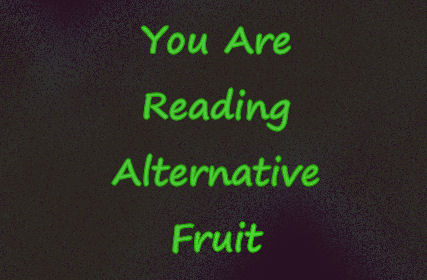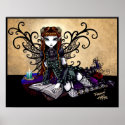|
For many who participate in subcultural society, their choices which cause them to gravitate towards various alternative scenes are based on an inner desire to deviate from the normality offered and actively adhere to something else. It requires a level of social energy that continually re-asserts self independence from the crowd, meaning that an alternative lifestyle can be seen as a "moral career", which employs time and effort to maintain. From an outsider's perspective, a person's participation in an alternative scene can appear to be hard work. We imagine ourselves in their shoes and become aware of the great efforts we would need to make in order to be like that. This is of course a one sided view that doesn't consider the other perspective.
The effort involved in maintaining an alternative mindset and lifestyle is a parallel to the continual effort of normal culture to assert itself as the most tasteful and upright way of life. The pressures of society become a force which for many is too high, or in their experience simply not helpful, many choose to actively refuse by way of choosing to adhere to an alternative subculture in which the rules and regulations of social status and interaction do not demand such high standards. Many forms of alternative subculture begin life in poorer areas in which young people are forced to make their own way in life with the little that they have. Music and dress become symbolic to their struggles and it feeds the social subconscious with continual self identification prompts that allow group binding and togetherness to be prominent in otherwise troubled lives. This identification of self with trend follows on to media over time, and the movement within society that breeds the particular media are generally attached to the subculture itself. From an outsider's perspective, a subculture can be analysed by the manner in which it deviates from normality, or cultural fashion of the day. Where-as many forms of alternative scene strictly revolve around music, art, and literature, many others carry with them set routine behaviours and activities that go hand in hand with the definition of the scene. It can be seen that various forms of subculture have various degrees of deviancy and various degrees of social cohesion in a dualistic nature. From an insider's perspective, the alternative lifestyle and adhesion to a particular subcultural trend or societal movement can be seen as a way of trying to find the self in a world that wants self to be something else. Often those who find themselves more comfortable in alternative subcultures are not comfortable within the main trends offered by the society around them. As stresses and expectations on individuals increase year by year, this is becoming ever more apparent. The standard rules for measuring deviation have been in place since the 1950's, and can generally be split into four separate observations. These are firstly, the nature of deviation or the ways in which the social deviant differs from a societal norm. Secondly, the typical social reaction to the deviant can be measured, is it accepted and to what degree? Thirdly, the natural history can be analysed. This means the way in which family and friends relate to the individual since their choice to adhere to alternative subculture. Does it affect their career and relationships? Fourthly, the actual participation of the deviant is measured. There will be activities and routine subcultural conventions that are offered which members of the scene participate in. The more participation demonstrated, the more social capital can be acquired. However, this doesn't address the main truth that most participants are not actively deviating, but rather reinforcing their independence from something other than what they identify with. This cold and outsider's view way of addressing societal differences can only reach so far. In order to further appreciate the movements and trends within an alternative subculture, further observations need to be addressed. It is important to understand the history of the subculture, appreciate its origins and the societal-political landscape of the day. This is followed by the types of individual who decided to follow in the footsteps of the pioneers of the subculture and maintain it as a form of expression for new generations. The media has a part to play in the cultural definition of symbols, icons, and behaviour, in what they choose to replicate with their main stream channels. By representing as much as they can, in order to reflect true society, the choices made will end up becoming the foundations for further choices made by society. This creates a feedback loop which validates some and invalidates others. Society's reaction to this in the media is the evolution of alternative style and trend. It is also important to note that the personality of an individual plays a major role in what they are able to adhere to within society. It is often that people choose the line of best fit through life and when offered alternative society, the nature of the movement and trend often feels more suitable. This need to be seen as a real and important factor in the choice to maintain what could be considered as social deviance. |
Alternative Fruit is reader supported. You can support the production of quality online media with a small donation. Thank you so much.
Categories
All
|
|
Shop to Support Alternative Fruit
|
Thanks for supporting Alternative Fruit
Read our Privacy Policy here For people, for peace, with love. Made in the UK by Homunculus Media |



